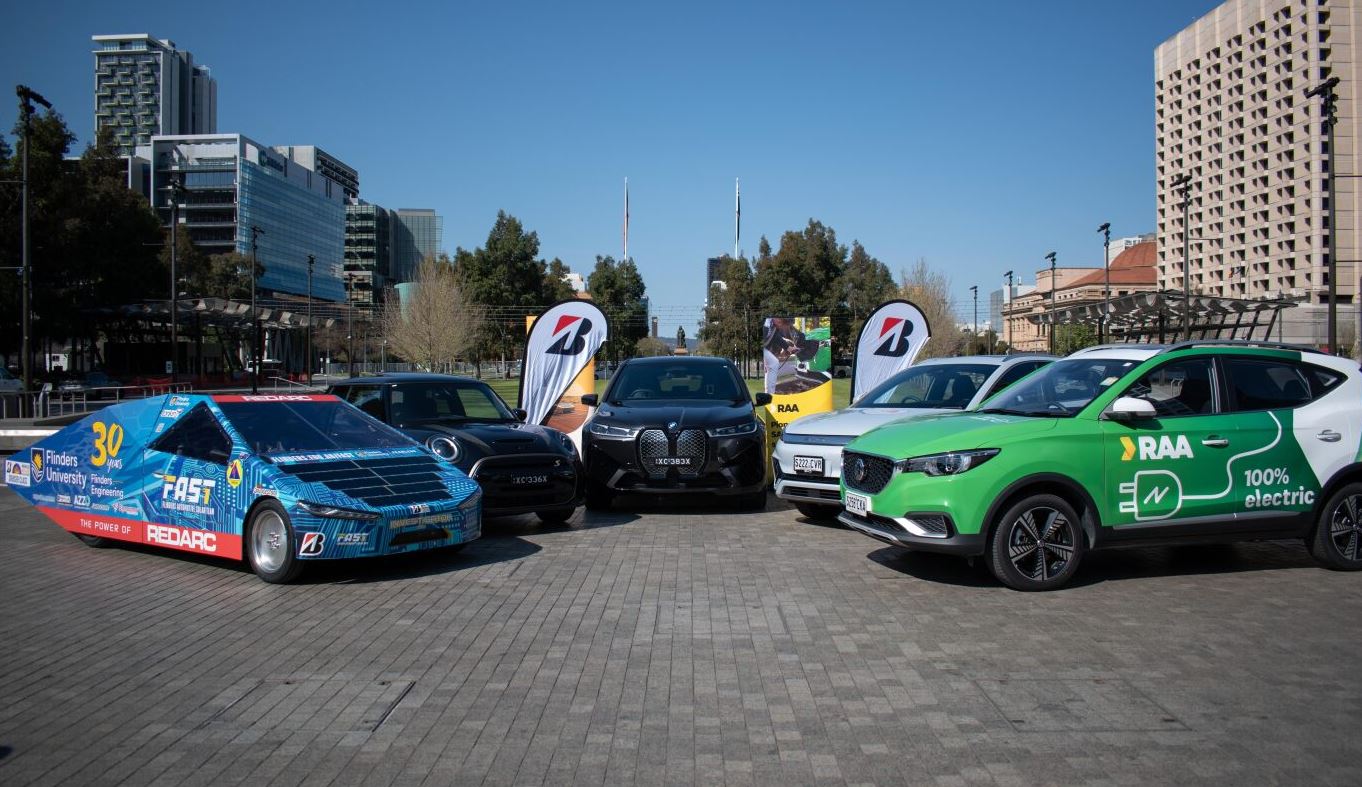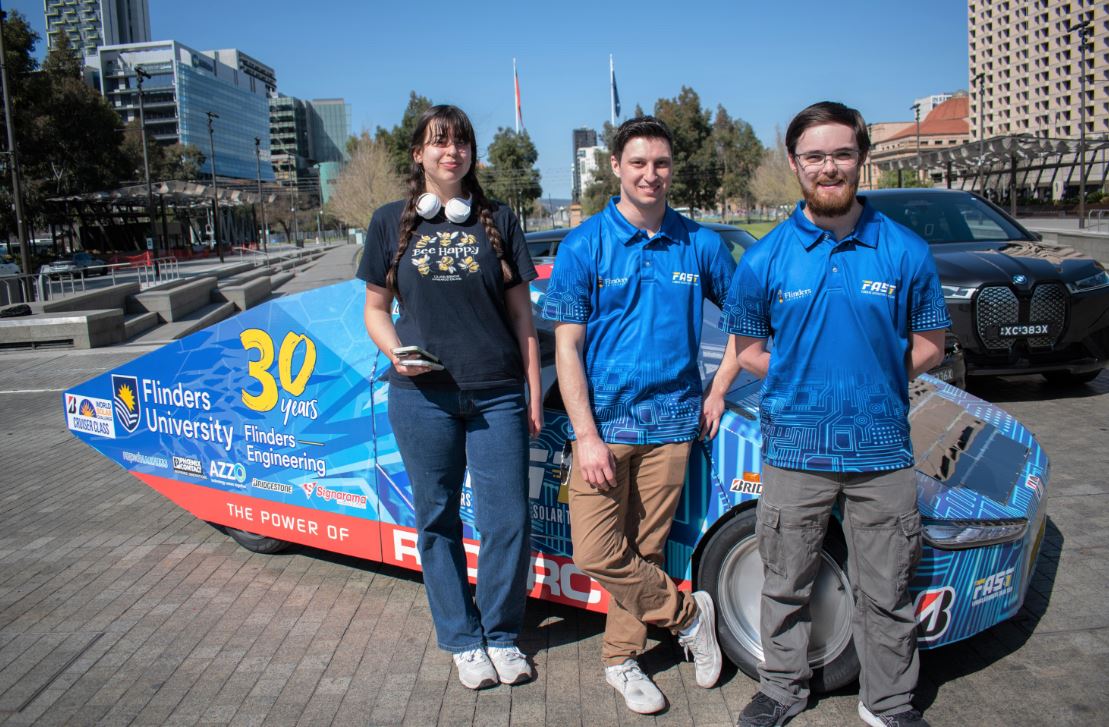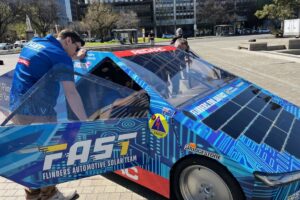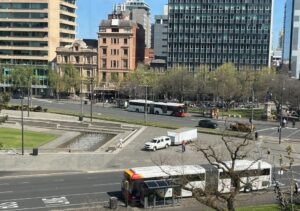
The futuristic Flinders Automotive Solar Team (FAST) entry in this year’s Bridgestone World Solar Challenge is set to showcase some pioneering prototype features for sustainable passenger cars of the future.
Equipped with new battery and innovative solar recharging capabilities, the Flinders University College of Science and Engineering entry will join nine other entries in the Cruiser Class, lining up against the ‘open’ Challenger Class all-solar vehicles on the starting line at Darwin’s Hidden Valley Raceway on 22 October for the 3000km drive to Adelaide.
The Cruiser Class for solar-electric vehicles aims to deliver a practical, energy efficient, marketable solar electric car able to travel up to 1000km before external charging. Final judging will occur in Adelaide.
The closely contested solar Challenger Class has 29 entries from more than 15 countries.

FAST members Jamie Jackson says the ‘Investigator IV’ Flinders car is focused on the future of solar car technology.
“The Cruiser Class gave us a unique design challenge that Investigator IV aims to solve. There is a careful balancing act between a hyper-efficient racing vehicle that is lightweight and still keeps the comforts of a practical vehicle.”
Together with Platinum Partner REDARC Electronics and other key sponsors, the FAST design includes an improved battery management system ensuring reliability during the endurance race.
The student led engineering team is increasing the battery capacity by almost double and solar efficiency by 30%, while making the car lighter and improving driving performance by decreasing rolling resistance, increasing aerodynamics and range.
The real-world engineering competition lines up with the University’s sustainability goals, which includes a fleet of electric vehicles and 100% renewable electricity including solar generated on campus or here in South Australia.
 Top Speed: 130 km/h +
Top Speed: 130 km/h +
Range: Estimated at 1000km + on a single charge
Weight: approx. 800 kg
Solar Capacity: 1.1 kW – capable of providing up to 100 km additional range per day
Solar Cell Count: 309 SunPower Maxeon Gen 3 cells
Innovative Technology: Ultra-lightweight body shell / 390 Nm Yasa motor compatible with “type 2” public AC charging infrastructure / approx 51 kW of batteries, made up of 4312 cells on board similar to type used in a number of early Tesla vehicles.
The first Challenger Class vehicle are expected to arrive in Adelaide from the 26 October while the Cruiser Class solar cars are judged on more than speed to the finish line.
This strategic contest allows teams to time their arrival into Adelaide between 11.30 am and 2pm on 27 October.
 A large electric vehicle display will be a feature at the Bridgestone World Solar Challenge (BWSC) Village finish line at Victoria Square / Tarntanyangga, from 27 October to 29 October.
A large electric vehicle display will be a feature at the Bridgestone World Solar Challenge (BWSC) Village finish line at Victoria Square / Tarntanyangga, from 27 October to 29 October.
Ten electric car vehicle brands will be available for public demos at the new RAA EV Drive Experience. Brands available for a free test drive will include BYD, BMW, Porsche, MG, Ford, Nissan, Hyundai and Kia.
As well as the focus on solar renewable energy, BWSC event director Chris Selwood says the lineup of electric cars, bikes and scooters for viewing and free test drives will be accompanied by expert advice on EV battery and home EV charging solutions.

